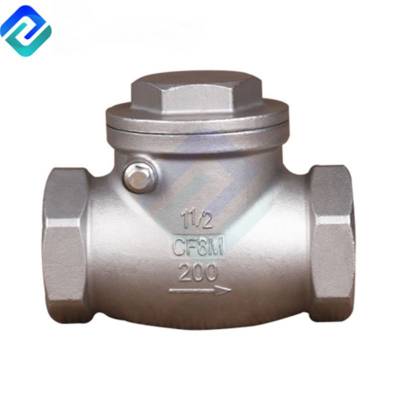- +86 187 3271 1873/+86 132 8322 1383
- [email protected]
As far as the directional valve is concerned, the Check Valve is the simplest in concept and function. They are designed to allow flow in one direction while preventing flow in the opposite direction-that's it. Some valves have become more complex, such as pilot-operated check valves, but the most commonly used as supplementary components for fluid power systems are straight-through check valves.
An in-line component is any useful object located in a circuit and connected as it is to an adjacent fluid conduit in a fluid connection line. Inline components are convenient and versatile, and are usually added to enhance existing circuits or as an upgrade to existing machines. In-line check valves are no different and have many uses.
Many functions of the fluid power circuit require a one-way flow path, and in-line check valves provide the best solution. For hydraulic applications, the check valve will consist of a steel body and a spring-loaded ball or poppet with a retainer. Pneumatic applications have greater structural freedom due to their lower rated pressure, so the material can be brass, aluminum or even some type of plastic or composite material.

Check Valve
The most common strategy for Straight-Through Check Valves is to prevent pressure from being transmitted backwards, rather than transmitting pressure backwards, which always produces flow. An example of this strategy is the check valve that is usually installed after the pump in a system that uses an accumulator. The check valve prevents the stored energy from flowing back into the pump, which is a particularly important task when energy is stored in the accumulator and the pump is not even running. The energy stored in the accumulator may be dangerous or damaged and must be controlled to make the hydraulic system safe and reliable.
In complex load sensing applications, the pump or compensator used to read load sensing signals downstream of all Control Valves only needs to sense the highest pressure of all functional actuators. The load-sensing check valve network opens a parallel path of hydraulic oil from each actuator to the main compensator. The highest pressure channel overcomes its check valve and subsequently closes all other check valves in the network. Although they are not really individual piping components that conform to the "online" nomenclature, they are installed in valve blocks or manifolds and are only used to open or close the on-line flow path.
A straight-through check valve can be added to an existing hydraulic circuit to increase functionality. For example, in-line needle valves can be added to compression-loaded cylinder applications, but the machine operator believes that the cycle time can be reduced. The needle valve can reduce the flow in two directions. This application actually only needs to measure the flow when retracted. Therefore, a straight pipe check valve is surrounded on either side of the needle valve to achieve real flow. control. Now, when fluid flows unimpeded through the check valve, it will bypass the needle valve, providing full flow when extended. The check valve prevents free flow to retract, forcing fluid to flow through the needle valve and controlling the downward movement of the cylinder.